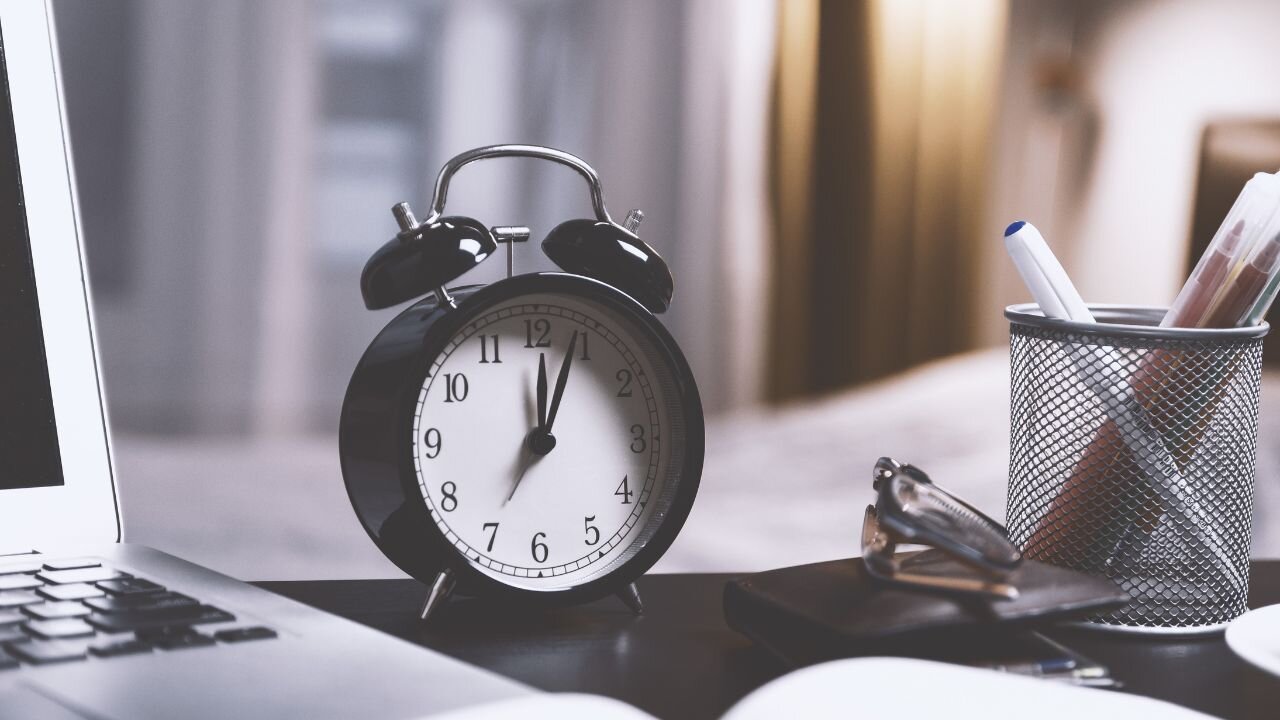Premium Only Content

66% of Americans think daylight savings should be abolished
It might serve as a convenient scapegoat for disrupted sleep and missed appointments, but three in five Americans don’t actually mind daylight saving time all that much.
Changing the clocks twice a year, though? That’s another story entirely.
According to a recent survey of 2,000 respondents, three in five feel positively about daylight saving time as a general concept – but also still think the practice of moving clocks an hour forward and back should be abolished.
Reported by OnePoll on behalf of Pacific Coast, the survey also revealed that over half of those polled (55%) own at least one analog clock they still need to fix manually.
Four in 10 would prefer a permanent form of daylight saving, where the sun rises and sets later in the day on a year-round basis.
As it stands, the typical respondent needs 66 hours, or over two and a half days, to adjust to a new routine after the clocks change.
Compared to men, women like it less (56% vs. 43%) and actively dislike it more (16% vs. 6%) perhaps because it takes them an extra three hours to adjust.
Age may also play a role, too, as baby boomers (ages 56-78) are almost twice more likely than Gen Xers (ages 42-55) and 11 times more likely than millennials (ages 26-41) to hold a negative view of daylight-saving time.
Of the three generations, boomers also seem to get the most sleep overall – almost half an hour more than gen Xers and a full hour more than millennials.
Just over a third get the recommended seven to nine hours of sleep a night, and another third only get between four and five hours.
And only 60% keep a fairly consistent sleep schedule of going to bed and waking up around the same time each day.
“It’s important to be gentle and understanding with yourself when daylight saving rolls around – after all, gaining and losing that hour of time can throw off your circadian rhythm,” a spokesperson from Pacific Coast advised. “Consider going to sleep a little earlier than you would otherwise, or allow yourself more time to unwind and relax before bed.”
Not surprisingly, if given a choice between being given the “perfect sleeping arrangements” and the power to make daylight savings permanent, most respondents (45%) would choose the former.
So what would that “perfect” sleep entail? Forty percent said it would have to be climate controlled, such as the temperature of the room (40%) and their mattress (37%) or bedding quality (27%).
Regardless, the average respondent replaces their pillow every one to two years, which aligns with common recommendations from experts.
Of those polled, three in five tend to prefer a “soft” or “medium” pillow, while only one in five favor a “firm” level of comfort.
“To create your perfect bedding oasis, determine your sleep preferences, like your sleep position, preferred pillow firmness, the level of support needed for your neck and spine, and if you suffer from allergies,” advised the Pacific Coast spokesperson. “These factors, along with the quality of your bedding will help you to achieve the most restful and restorative sleep.”
Survey methodology:
This random double-opt-in survey of 2,000 general population Americans was commissioned by Pacific Coast between October 14 and October 15, 2022. It was conducted by market research company OnePoll, whose team members are members of the Market Research Society and have corporate membership to the American Association for Public Opinion Research (AAPOR) and the European Society for Opinion and Marketing Research (ESOMAR).
-
 1:18
1:18
SWNS
15 days agoParents struggle to balance fun and healthy lunches
501 -
 51:41
51:41
BonginoReport
8 hours agoParalyzed Woman Blames COVID-19 Jab, Sues Moderna! - Nightly Scroll w/ Hayley Caronia (Ep.103)
81.3K37 -

Dr Disrespect
8 hours ago🔴LIVE - DR DISRESPECT - STREAMING UNTIL I GET A 25 KILL GAME
201K7 -
 DVR
DVR
Robert Gouveia
2 hours agoNew Jail Video 'Discrepancies' DISCOVERED! FBI Burn Bag! Biden Appointee FIRED!
16.8K2 -
 15:18
15:18
T-SPLY
4 hours agoCNN DROPPED a NUKE On Democrats - Worst Polls Ever!
1.91K4 -
 7:21
7:21
SKAP ATTACK
7 hours agoNBA Execs Think the Bubble Championship is a Joke
2.34K1 -
 8:29
8:29
ARFCOM News
5 hours agoAG ~~REFUSES~~ To Stop Enforcing Unconstitutional Law | How Trump Plans To Give Guns Back To Felons
2.11K2 -
 LIVE
LIVE
LFA TV
23 hours agoLFA TV ALL DAY STREAM - FRIDAY 8/1/25
740 watching -
 1:23:12
1:23:12
Roseanne Barr
3 hours agoBlackmail Nation: The Epstein Cover-Up with Nick Bryant | The Roseanne Barr Podcast #109
73.9K35 -
 26:40
26:40
Michael Franzese
3 hours agoThe Self-Proclaimed King of the Mafia: Vito Genovese’s Fatal Throne
19.1K2